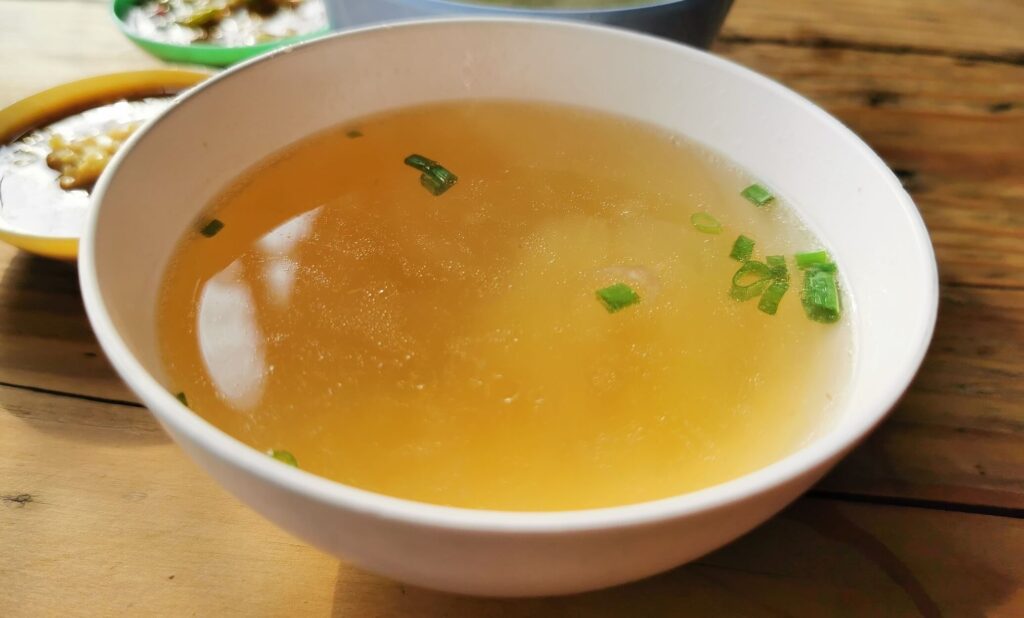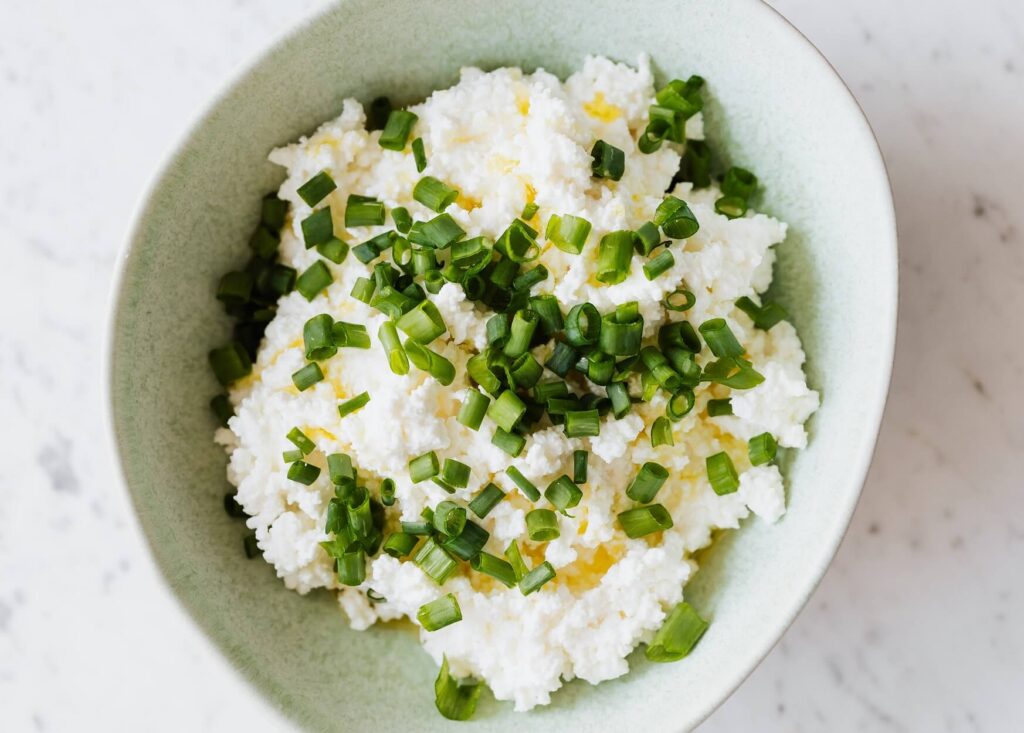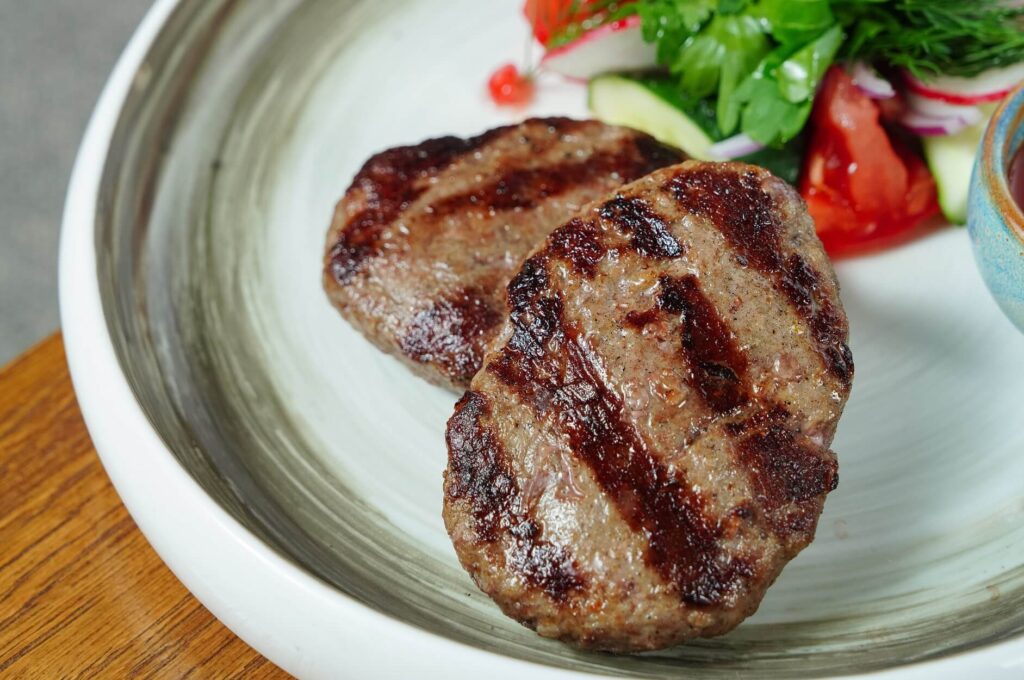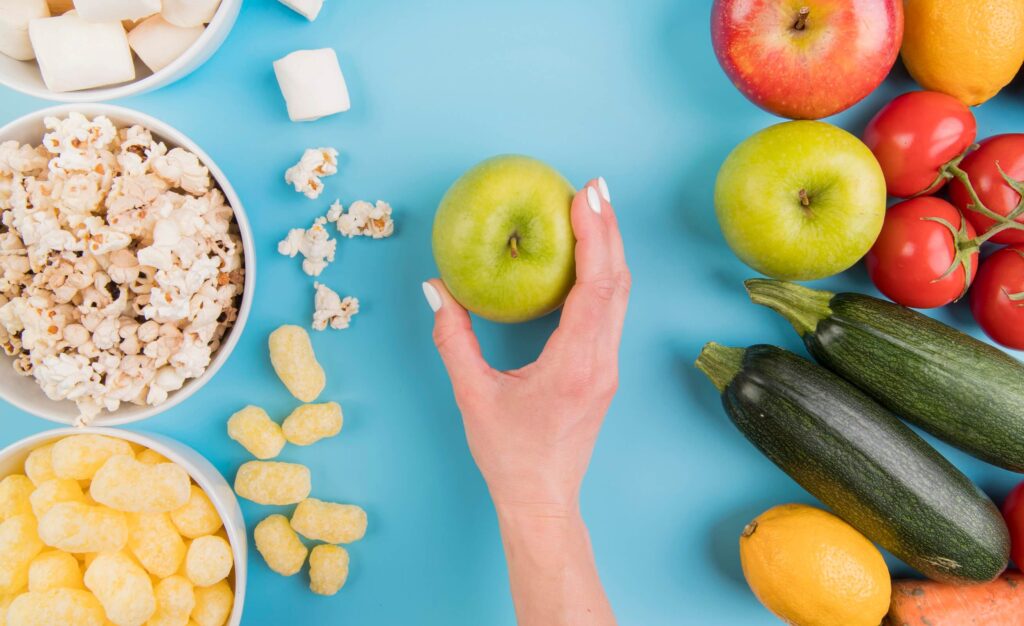There are a variety of foods with low calories that can support weight loss while still satisfying your hunger. For example, if you’re looking to lose weight while still feeling full, add oats, yogurt or other high-protein, high-fiber foods to your diet. Cutting down on calories isn’t always easy, but there’s a wide variety of nutritious foods out there that are both low in calories and high in nutrients. Mixing and matching both high-fat and low-fat foods is a great way to support weight loss. Some unexpected swaps can be beneficial to your health. For example, replacing high-calorie snacks with lower-calorie alternatives such as apples of vegetables can not only reduce your calorie intake, but also increase your nutrient intake.
Here are some 14 best low calorie foods for filling:
1. Oats
Oats are a popular choice for breakfast due to their low caloric content, high protein content, and fiber content. One cup of dry oats contains only 154 calories, yet contains 5 grams of protein and 4 grams of fiber, helping to maintain a balanced hunger and calorie intake. In a study of 48 adults, oatmeal was found to make them feel more satisfied and reduce their hunger and caloric intake the following day. Oats have become increasingly popular as an alternative to milk due to their low calorie content, improved gut bacteria, anti-inflammatory properties, and soluble fiber.

2. Greek yogurt
Greek yogurt is a great way to get protein in your diet since its low in fat or fat-free. Plus, it has probiotics and calcium in it, so you get plenty of nutrients. You can enjoy it as a meal or as a snack. It’s also great for smoothies, and it has fewer calories than full-fat yogurt, but you may not be as satisfied with it. A study showed that eating nonfat Greek yogurt had a better effect on. You can also enjoy it on its own or add it to marinades to tenderize meat.

3. Watermelon
Watermelon is a super healthy fruit with a lot of water in it. It’s packed with micronutrients like vitamin C, vitamin A, and calcium. Eating watermelon every day can help you lose weight, reduce your BMI, and lower your blood pressure. A cup of watermelon (152 g) has 46 calories, plus 2 g of fat, 2 g of sodium, 11 g of carbs, 0.6 g of fiber, and 9 g of sugar. It also has 0.9 g of protein. Eating watermelon with a low calorie density can make you feel hungry and full, and a lower calorie density can help you eat fewer calories.

4. Cucumber
Cucumbers, also known as watermelon, are a superfood that’s super low in calories – only 16 calories per cup! They’re made up of about 95% water, so they’re a great addition to salads and pickles. To make a pickle, cut a cucumber in half and leave the edge a bit thick. Then fill the boat with whatever dip you like. The USDA says each cup of cucumbers has 8 calories, 0 fat, 1 mg sodium, 2 carbs, 0 fiber, 0 sugar, and 0 protein. So if you’re looking for a refreshing vegetable to add to your salads or make a low-calorie base for a high-protein dish like a chicken or tuna salad, cucumbers are the way to go!.

5. Potatoes
People often think that potatoes are bad for you because they’re so high in calories and fat, but they’re actually really filling and can be a great part of a healthy diet. A medium baked potato has 161 calories, and it also has 4 grams of protein and 4 grams of fiber. A study found that boiled potatoes were the most filling food out of all of them, with a satiety index of 323, which that of a croissant is almost seven times.

6. Soup
Soup is often viewed as a simple and convenient accompaniment to meals, however, it can be a source of substantial nutrition. Depending on the type and brand, soup can contain a variety of calories and proteins. For example, a can of condensed chicken noodle soup from a can contain approximately 60 calories. Furthermore, research has shown that soup can be just as nutritious as solid foods.
A study found that consuming soup before a meal can reduce the rate of stomach emptying and make one feel more full. Additionally, eating soup before lunch can reduce one’s total caloric intake by 20%. It is important to note that cream-based soups, can contain a high number of calories. Therefore, it is recommended to opt for a lighter soup, such as broth or stock.

7. Berries
A cup of blueberries has only 86 calories and is packed with fiber at 3.6 grams. Studies have shown that pectin in berries slows stomach emptying and can make you feel fuller later in the day, which can help you reduce your calorie intake. In fact, one study found that a fruit snack in the afternoon reduced calories by 65 percent compared to a gummy candy snack. Raspberries have the highest fiber and lowest sugar content of any fruit. You can enjoy them in many different ways, such as in a blended smoothie, Greek style yogurt or cottage cheese.
Regular consumption of berries, like strawberries, may help protect you from conditions such as Alzheimer’s and cardiovascular disease. USDA dietary information for strawberries: 64 calories 0.8 g fat 0.0 g saturated fat 1.2 mg sodium 15g carbohydrates 8g fiber 5.4 g sugar 1.5 g protein.

8. Eggs
Eggs provide a nutritious and cost-effective source of protein, with a serving size of one egg providing approximately 72 calories. Additionally, it is rich in vitamins and minerals, making it a great source of vitamins and minerals for a balanced diet. Studies have shown that eating an egg instead of a bagel can help people feel fuller and consume less lately in the day, while also reducing snacking, stomach emptying, and hunger hormone levels. Although there is some debate over the relationship between cholesterol and eggs, they remain a great source of low-calorie lean protein, and may even help to stabilize blood sugar levels. Eggs are a cost-effective protein source that can be added to almost any meal.

9. Chia seeds
Chia seeds are often seen as a superfood because they’re packed with protein and fiber in a small amount of calories. One ounce of chia seeds is good for you – its 138 calories, has 4.7 g of protein, and 9.8 g of fiber. Plus, it’s packed with soluble fiber, which helps your stomach feel full. If you want to cut down on your calorie intake, adding two servings to your diet can help. In one study, 24 adults reported feeling less hungry, less tempted to eat sweets, and having a better feeling of fullness when they added chia seeds to their yogurt.

10. Fish
Fish is a highly nutritious food source, providing a substantial amount of protein and heart-healthy fats. For instance, a 3-ounce serving of cod provides 13 grams of protein and fewer than 60 calories. According to some studies, consuming more protein can help to reduce appetite and reduce the amount of ghrelin (a hormone that causes hunger). Fish protein may be particularly beneficial in alleviating hunger. A study of various meats, including beef, chicken, and fish, found that fish was the most effective in reducing feelings of hunger.
Fish is also rich in omega 3 fatty acids, which have been associated with improved cholesterol, triglycerides, inflammation, and increased blood clotting. Additionally, fish is rich in iodine, selenium, vitamin D, fiber, sugar, and protein.

11. Cottage cheese
Cottage cheese is packed with protein and is a great snack. One cup of low-fat cottage cheese has 28g of protein and only 163cal. Eating more protein like cottage cheese can help reduce your appetite and hunger. Some studies even show that eating protein can make you feel hungrier for longer. It’s becoming more and more popular on social media because it’s so versatile, has a great texture, and is low in calories. Plus, it’s a great protein source that can go with any meal or snack. You can add it to your avocado toast to give it a nutritional boost. Nutrition facts: 90 calories, 0g fat, 470mg sodium, 7g carbs, 0g fiber, 5g sugar, 14g protein.

12. Lean meat
Lean meat is a great choice for those looking for a balanced meal. Not only are they low in calories but they’re also packed with protein, like cooked chicken breast. Eating too much of one can make you feel hungry, but if you eat more, it’ll satisfy your hunger and keep you full for longer. Plus, the digestion of protein takes longer than refined carbs, making you feel fuller for longer. And it has little impact on your blood sugar levels. Plus, it’s a great source of protein for your heart, since all nine essential amino acids come from food. A three-ounce serving of cooked chicken breast is 140 calories, plus fat, cholesterol, sodium, carbs, fiber, sugar, and protein.

13. Legumes
Eating legumes is a great way to get plenty of fiber and protein, and they’re also low in calories and fat. Eating whole foods can help you lose weight, improve your body composition, and improve your overall health. You can also add them to your meals for an extra boost of fiber and protein – especially if you’re looking for canned varieties with low or reduced sodium. A cup of boiled lentils has 230 calories and 15.6 grams of fiber, plus almost 18 grams of protein.
Eating a high protein meal with beans and peas can also increase appetite and reduce hunger more than eating veal and pork, and a review said people were 31% happier after eating pulses than eating high-carb meals like pasta and bread.

14. Popcorn
Popcorn is an ideal snack for managing weight due to its low calorie content (31 calories) and high fiber content (1.2 g), which slows down the digestive system and helps to stabilize blood sugar levels. It is also rich in antioxidants such as polyphenols, making it a popular movie theater snack and a great snack to share with friends. Additionally, research has shown that people who consume a 100-calorie serving of popcorn are more satisfied than those who consume 150-calorie potato chips. However, it is important to note that many prepackaged popcorn contains extra fat and sugar, which may increase its calorie content.

Many more other foods:
| Foods | Nutrition’s | Calories |
| Apples | Fiber, vitamin C, potassium, antioxidants | 1 cup of apples slices – 62 calories |
| Grapefruit | anti-inflammatory, antioxidants | ½ grapefruit – 37 calories |
| Beets | Folate, manganese, betalains, phenolic compounds | 1 serving boiled beets – 74 calories |
| Asparagus | vitamins and minerals, antioxidants, anti-inflammatory | 1 cooking cup asparagus – 38 calories |
| Brussels sprouts | Vitamin C | 1 boiled cup of Brussels sprouts – 70 calories |
| Papaya | Vitamin A and C, folate, potassium | 1 pound – 68 calories |
| Broccoli | vitamins and minerals | 1 cup of cooked broccoli – 54 calories |
| Cauliflower | a lower-carb diet | 1 cup of boiled cauliflower – 40 calories |
| Carrots | carotenoids such as lutein, beta carotene | 1 single slice of carrots – 50 calories |
| Celery | protein, fat, fiber | 1 cup of celery – 17 calories |
| Iceberg lettuce | vitamins K, A, and F | 1 cup – 8 calories |
| Kale | Vitamins A, C, and K, manganese, copper. | 1 cup of cooked kale – 49 calories |
| Onions | help reduce your risk of heart and kidney disease | 1 medium-sized cooked onion – 70 calories |
| Peppers | antioxidants like vitamin C, lycopene, | 1 cup – 24 calories |
| Mushrooms | vitamins and minerals | 1 cup of mushrooms – 44 calories |
| Radishes | vitamins, minerals, and antioxidants | 1 cup of radishes – 19 calories |
| Spinach | Vitamin K, Provinces A, Folsom | 1 cup spinach – 7 calories |
| Watercress | Vitamin K, C, A | 1 cup of watercress – 4 calories |
| Tomatoes | plant compounds known as lycopene | A cup of cherry tomatoes – 27 calories |
| Turnips | vitamin C | 1 cup of cooked turnip – 34 calories |
What is very low calorie diet?
Very Low Calorie Diet (VLCD), also known as a semi starvation diet or crash diet. Basically, it’s a diet with very little or no food energy consumption. It’s defined as eating 800 calories or less per day (3,300 kilojoules) or less. Most modern medically supervised VLCD uses total meal replacements, which are regulated in Europe and Canada and include the recommended daily intake of vitamins, minerals, and trace elements, as well as fatty acids, protein, and electrolytes.
Carbohydrates can be completely absent or replaced with a portion of protein, which can have a big impact on your metabolism. VLCDs have special therapeutic applications for people who need to lose weight quickly, like those with obesity or before bariatric surgery, and they’re formulated with complete liquid meals that contain 800 calories or less for up to 12 weeks.

Conclusion
If you’re looking for a healthy way to eat, there are lots of low-calorie foods out there. But don’t just go for the lowest-calorie option – think about how much nutrition it has. Mixing low-calorie fruits and veggies with higher-fat, protein, and fiber foods can help you stay full without feeling hungry all day. Make sure to pick whole, real foods that you can trust and read the labels for the best nutrition.
FAQ
What are some low calorie foods for weight loss?
Weight loss diets often include a variety of low-calorie foods, such as leafy greens such as spinach and kale, as well as lean proteins like chicken breast and tofu. Additionally, high-fiber foods such as beans and lentils can be incorporated into meals to help reduce overall calorie intake while delivering essential nutrients for a successful weight loss journey.
How many calories should burn in a day?
The amount of calories you should be burning each day depends on a few things, like age, gender, how active you are, and what you’re trying to achieve with your weight loss goals. Generally, if you want to stay at your current weight, you should burn as many calories as you eat through your diet. But if you’re trying to lose weight, it’s best to talk to a healthcare professional or dietitian to get personalized advice based on your needs and goals.
How can I create a low calorie meal plan?
A low calorie meal plan is made up of foods that are high in nutrients and low in calories. These foods include fruits, veggies, lean proteins, whole grains, and more. To create a meal plan that is low in calories, you need to: Calculate your daily calorie needs set a calorie target that matches your weight loss goals Design your meals around portioned servings of these foods that are low in calories and high in nutrients.
What are the best low calorie snacks?
The best low-calorie snacks aren’t just low in calories. They’re also high in fiber, protein and healthy fats that help curb cravings and provide long-lasting energy throughout the day. Here are a few examples: Apples or berries raw vegetables Hummus Greek yogurt Honey Mixed nuts.
How to burn calories daily?
If you want to make sure you’re burning calories every day, make sure you’re getting in some exercise – like walking, running, cycling, or something else. Make sure you’re eating a balanced diet that has lots of nutrients, and don’t forget to portion out your meals – that’s key to staying on track with your calorie intake.
Are there low calorie fast food options?
Many fast food chains offer a variety of low-calorie options. These can include items such as grilled chicken sandwiches and salads with a side of vinaigrette. Additionally, wraps containing lean protein and a variety of vegetables can be less caloric than fried and highly processed menu items. Nevertheless, it is essential to be mindful of portions and ingredient selection in order to make healthy fast food choices while still managing calorie intake.
What fruits and vegetables are low in calories?
Fruits and vegetables have a naturally low calorie content, making them great options for a balanced diet. Berry, melon, citrus fruits are all low in calories. Leafy greens like spinach, kale, cucumber, and bell pepper are low in calories as well, making them great choices for those who want to control their calorie intake and enjoy a wide variety of healthy foods.
How many calories is 10000 steps?
The amount of calories you burn from walking 10,000 steps can vary depending on things like your weight, how long it takes to walk, and how fast you’re walking. On average, you can burn around 300 to 500 calories, but you can get a better idea of how many calories you’re burning by using a fitness tracker or a calculator that takes your info into account.
Reference Used:
https://www.goodhousekeeping.com/health/diet-nutrition/g41111495/low-calorie-foods/





